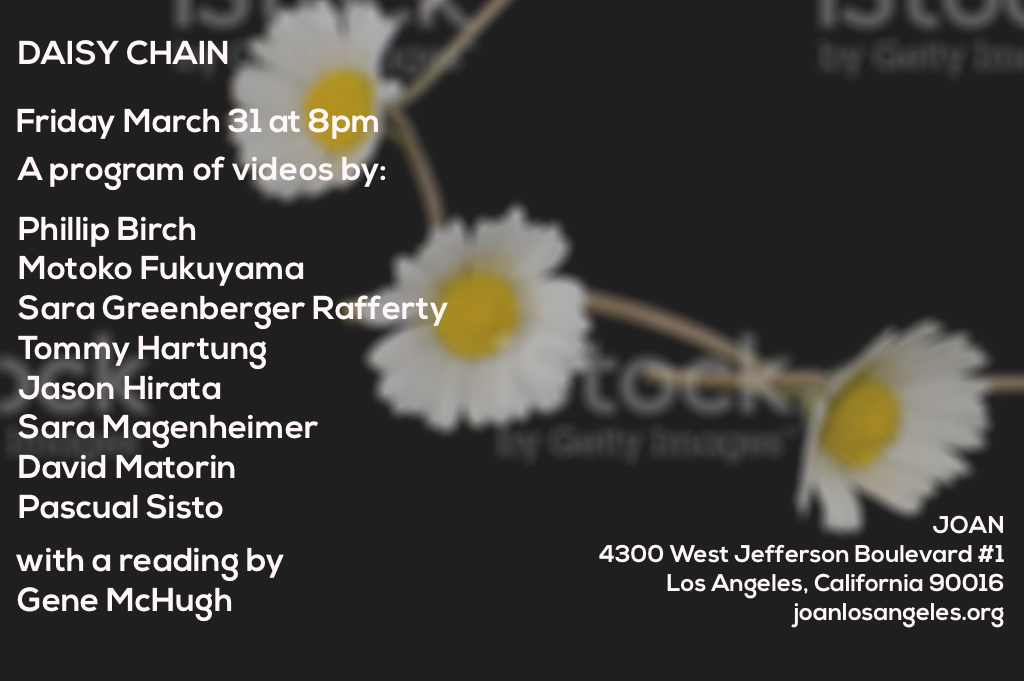Screening: Daisy Chain

SCREENING: DAISY CHAIN
Friday, March 31, 2017
Doors 7:30. Screening 8:00pm
Featuring: Phillip Birch, Motoko Fukuyama, Sara Greenberger Rafferty, Tommy Hartung, Jason Hirata, Sara Magenheimer, David Matorin, & Pascual Sisto, with a reading by Gene McHugh
DAISY CHAIN strings together a selection of new and recent videos that create systems of associative logic and draw inspiration from the fluidity of meaning within digital information. In network topology, “daisy-chaining” is the easiest way to add computers to a network, by connecting each in a series to the next. The term also refers to a kind of garland created as a child’s game (as well as a group sex act).
This screening will be prefaced by a reading by writer and curator Gene McHugh of a selection of tweets pulled from his Twitter account, Lotus_Caves. Lotus_Caves was set up to keep track of short phrases intended to be read aloud as a poem. Any meaning generated from the flow of one tweet to the next is unintentional, but also welcome. Themes and tensions weave in and out, never settling into a logic, but always with a logic on the tip of its tongue. The account follows no one and communicates with no one; it’s a repository for material and a method of research into ways of increasing the graphic and aural immediacy of language.
The videos employ an overlapping array of strategies including the essay form, musical structures, found footage, and CGI, but their concerns vary widely from piece to piece. In Sara Magenheimer’s Best is Man’s Breath Quality (2017), an ancient jellyfish suggests how new empathetic positions may inform human capabilities to heal. Pascual Sisto’s Daisy (2016) takes its title from “Daisy Bell,” the song programmed by Bell Labs in the earliest demonstration of computer speech. Jason Hirata’s Perfecting the Edelkrone Pocket Rig (2013) is a YouTube instructional video for a camera support system. Phillip Birch’s The Hand of God (2015) posits a conversation between the artist and Auguste Rodin. Sara Greenberger Rafferty’s Identify (2017) is made with footage of comedian Phyllis Diller’s joke archive, housed in the National Museum of American History. Tommy Hartung’s King Solomon’s Minds (2017) explores middle eastern demonology and contemporary notions of the foreign. Motoko Fukuyama’s You Never Know What Idea You Might Have (2017) is a document of the last electronic parts shop on New York’s Canal Street. And David Matorin’s Mahler’s sheds (The Alma Problem)(2017) comprises a speculative history of music and ephemeral monuments.
Each work engages in an interrupted discursive mode which reveals as much information in their synaptic gaps of logic as their stated areas of interest. The variable parameters of each video’s pursuits are mirrored in the program’s shifting flow of communiques–a mercurial stream of narration which reflects the contemporary moment.

0